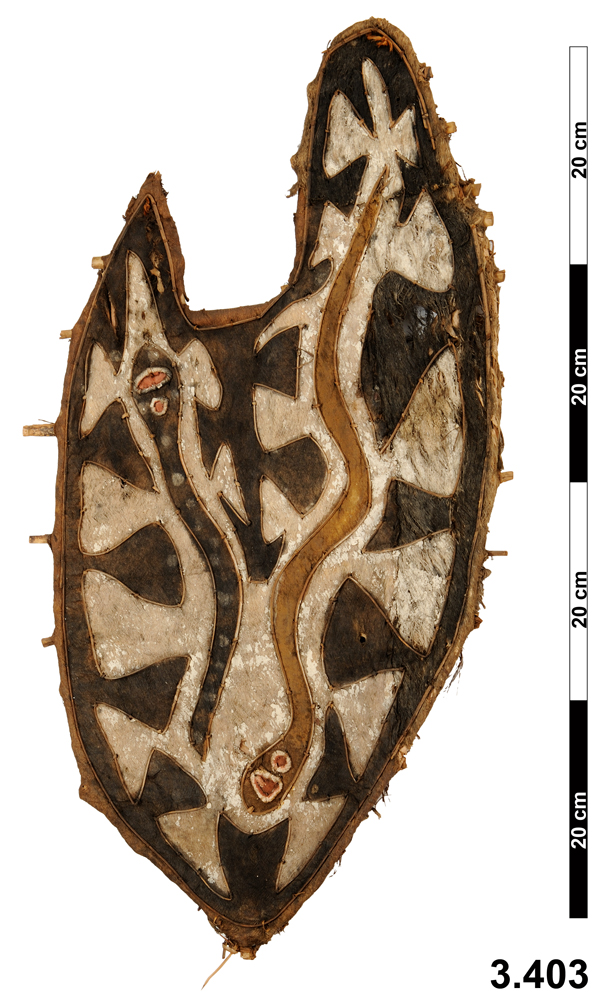More specifically, 2025 represents the year of the Wood Snake. The Chinese zodiac operates on a 12-year cycle of animals combined with one of five elements: wood, fire, earth, metal, or water. This year’s Wood Snake therefore last occurred in 1965.
Wood Snakes are said to be precise, calm, creative, and possess logical thinking. They are simultaneously associated with fortune, as well as cunning, evil, danger, and intimidation.
At the Horniman, we have a variety of items in our collection representing the snake, each with their own story.
Wooden Snake in a Box
When opening this hand-crafted box, a carved wooden snake with a pointed iron tongue swings out, catching the hand.
There is an inscription on the reverse, written in indelible pencil, and there is a stamp beneath this reading ‘Bellevue Censor Prisoners of War’. This box was made by a Boer prisoner of war held by the British at the Bellevue camp during the Anglo-Boer War.
Wooden Mexican Mask
This ritual dance mask from Michoacán, Mexico depicts a painted snake with red with a black, red, and yellow snake. The snake is in relief, coiling from above the right eye, passing down the right side of the face, through the open mouth, and onto the nose.
The snake assumes a variety of symbolic power across Mexico, also featuring in its Coat of Arms. Interpretations of its significance differ, but can represent wisdom, earth, evil and sin.
Indian Clappers
This pair of rosewood clappers, or kartāl, are hand carved and from Khammamett in Telangana, India. They depict double-headed snakes with painted streaks of gold and silver on the body, and golden eyes.
The double-headed snake carries significance in India, perhaps representing the Sand Boa. Although this snake only has one head, it is often termed a two-headed snake due to its round and thick tail.
The double-headed snake is said to bring fortune and prosperity, and is the most trafficked snake in the world as a result.
Daoist God Zhenwu
This clay glazed figurine from 18th Century China represents Daoist god Zhenwu, the Perfected Warrior or Dark Warrior, who is the guardian of the north.
If you look closely under his raised left foot, there is a tortoise encircled by a snake, the symbol of the north.
Both snakes and tortoises hibernate over the Winter, which may explain it’s symbolic power in Northern Daoist tradition.
Snake Shield

dance shield
Anthropology
This dance shield from Papa New Guinea depicts two snakes.
It is likely this shield, made from splitcane and barkcloth, was used as a dance ritual prop rather than warfare.
The significance of the snake in this dance ritual is unclear, but Papa New Guinea is home to over 80 species of snakes, with possibly more species still undiscovered.


